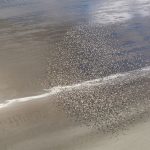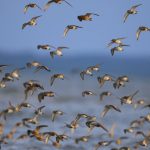Picture this— Grunion, known locally as “pejerrey”, come out of the water each spring and lay their eggs on the beaches. Meanwhile, roselaari Red Knots are traveling north from their southern wintering grounds to nest in the Arctic and stop to rest at this same site. Yes, like its Atlantic Flyway cousin,Delaware Bay, at Golfo de Santa Clara migrating shorebirds rely on the eggs of an aquatic species to refuel on their northward migration.
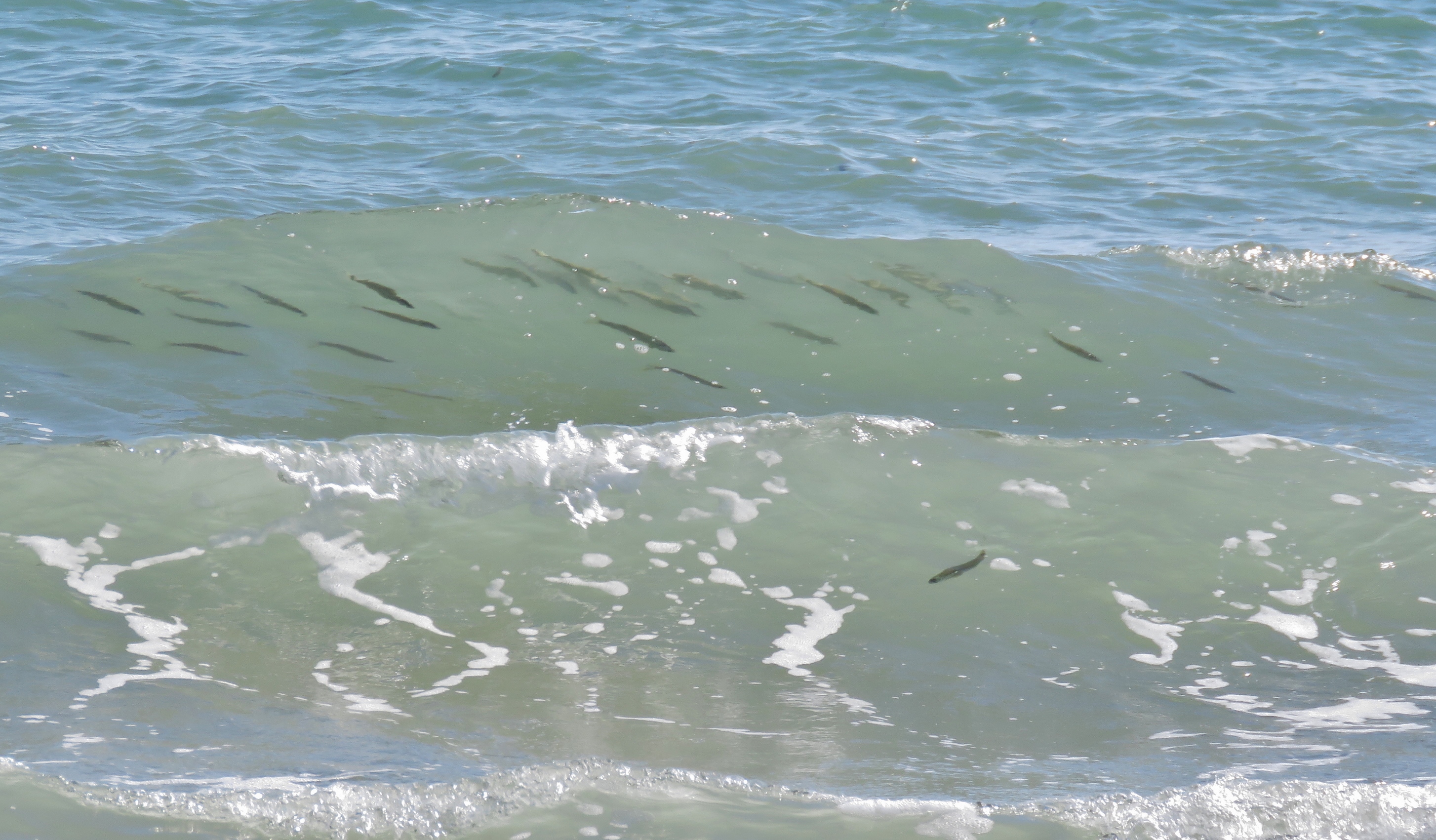
Grunion, known locally as “pejerrey.” Photo: Adriana Hernández Alvarez.
Golfo de Santa Clara is part of the Alto Golfo de California y Delta de Río Colorado WHSRN site that was designated in northwest Mexico in 1992. It was originally designated as Estero Río Colorado containing 240,000 hectares. It was expanded in 2015 by 49,350 hectares. Over 160,000 shorebirds use the area annually, but the added 45-kilometer stretch of adjacent Sonoran coastline which contains sandy beaches hosts more than 6,000 roselaari Red Knots. This number represents 35% of the subspecies’ population, qualifying the expanded site for an upgrade from International Importance to Hemispheric Importance.
Since 2010, site partners Universidad Autónoma de Baja California Sur (UABCS) and Pronatura Noroeste (PNO) have been conducting shorebird banding and monitoring with a focus on roselaari Red Knot. In 2017, they counted 6,123 roselaari Red Knots, and c.a. 4,000 individuals on average in the 8 survey years. Additionally, they resighted more than 350 individuals over that period.
These beaches are prime locations for spawning pejerrey and migrating roselaari Red Knot, but they are also a prime location for local residents and visitors on spring weekends, particularly Easter Week. The beaches can become packed with people and vehicles of all shapes and sizes. These visitors contribute to one of the key threats— disturbance to feeding and roosting shorebirds. People are also known to harass the spawning pejerrey.
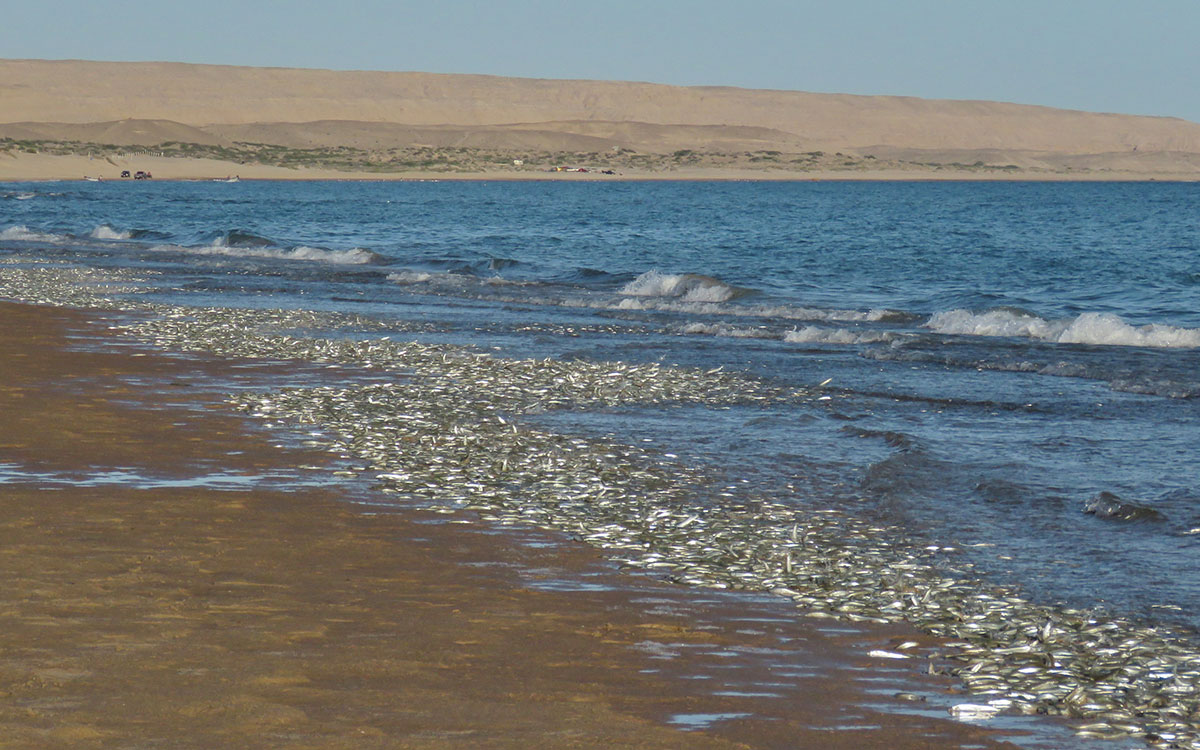
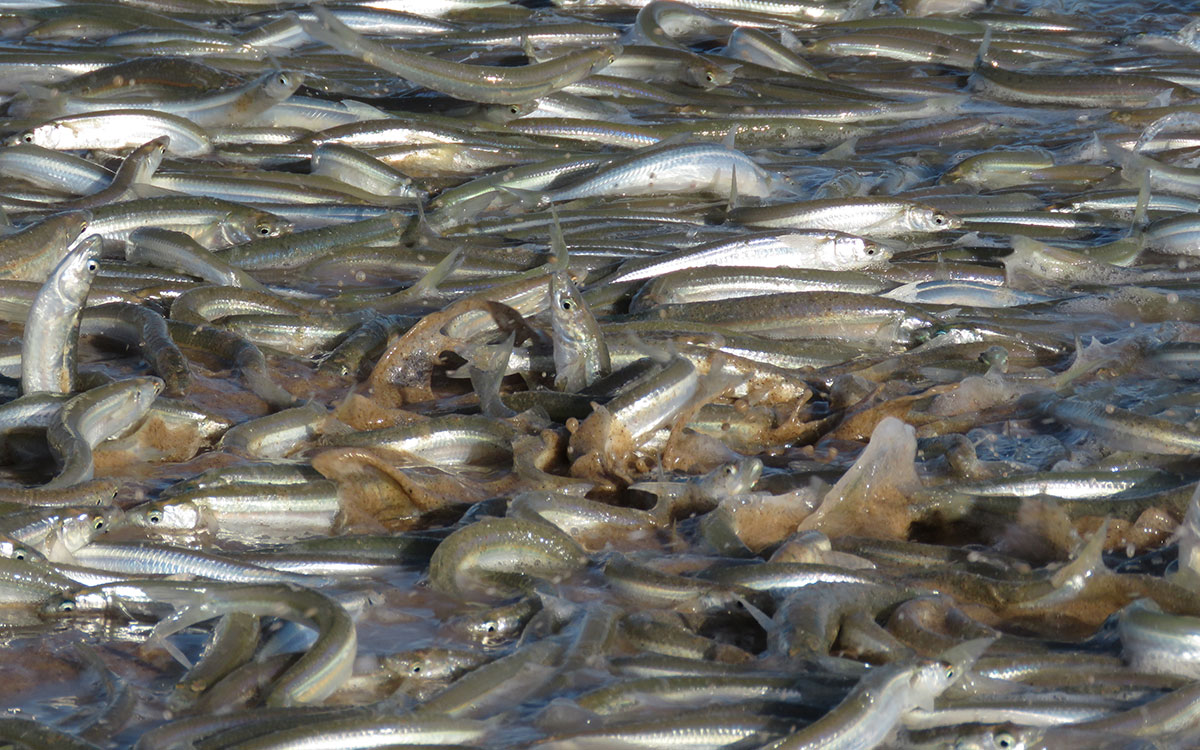
Spawning pejerrey at the Alto Golfo de Santa Clara. Photo: Adriana Hernández Alvarez.
In 2016, the WHSRN Executive Office worked with Alto Golfo de California y Delta de Río Colorado partners, including Comisión Nacional de Áreas Naturales Protegidas (CONANP), UABCS, PNO, Comisión de Ecología y Desarrollo Sustentable del Estado de Sonora and several local residents to conduct a Site Assessment Workshop, Good Governance, and Community Engagement workshops to understand the threats and develop solutions.
Unfortunately, community conflict over the vaquita (Phocoena sinus) prevented partners from moving forward on many of the objectives outlined in the good governance and community engagement workshops. The vaquita is an endangered porpoise that is impacted by certain fishing practices. Conservation action for vaquita has led to conflict between the government’s biological management team and the community. While the Mexican government works towards resolution on this issue, it has been difficult to move forward on the proposed actions for roselaari Red Knot.
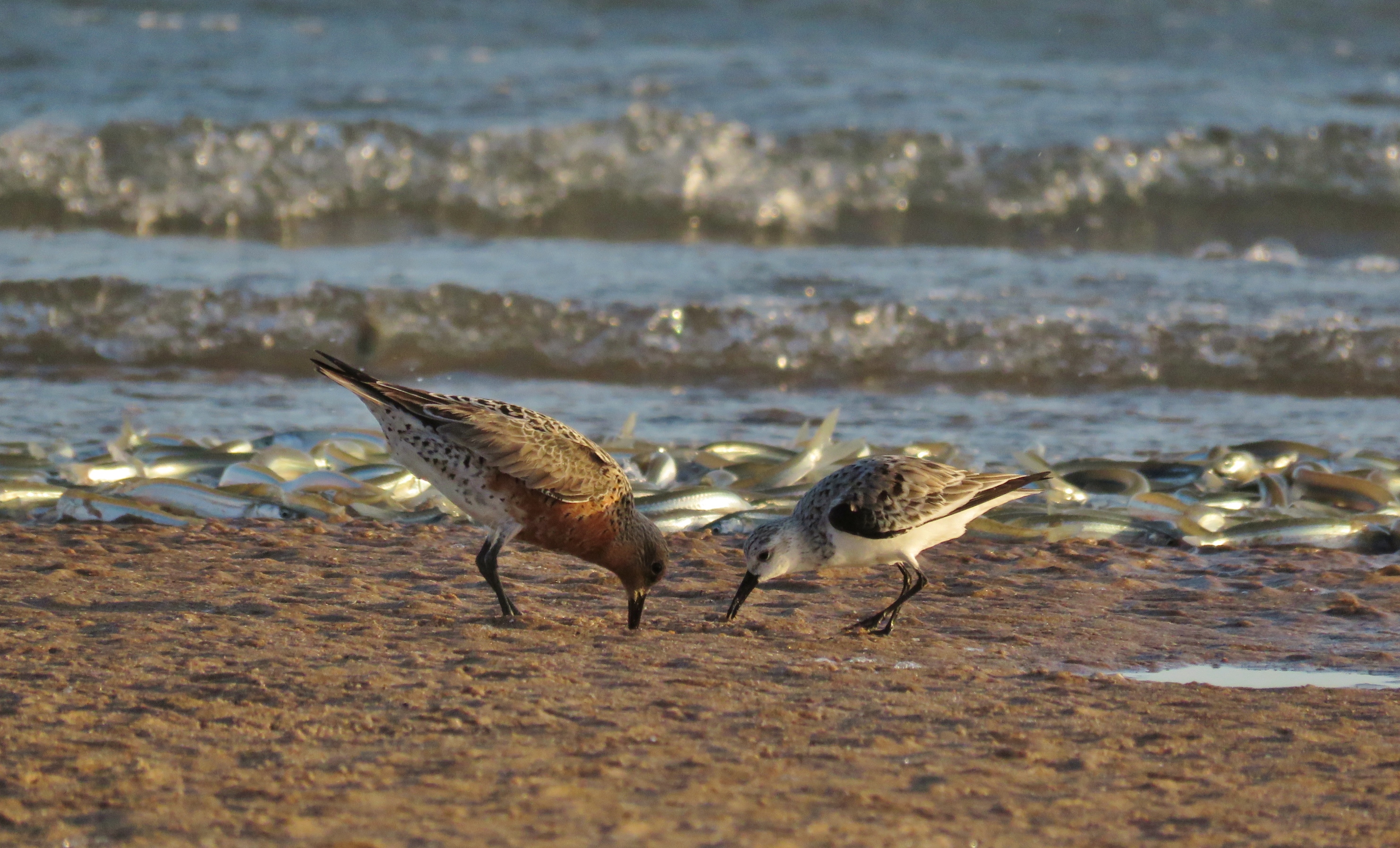
A Red Knot and a Sanderling feast on the eggs of pejerrey. Photo: Adriana Hernández Alvarez.
While many activities did not move forward, progress was made on several including information stations of the beach, creation of mascots with a naming competition, and development of a teacher training manual. The information stations included signs that said “Ask Me About Pejerrey and Red Knot.” The stations were run by volunteers and educated many interested visitors.
PNO and CONANP worked with a local company to create two human-sized mascots, one pejerrey and one Red Knot. The mascots were then taken to the local schools where they danced and sang the official song of the campaign “Golfeños take care of the pejerrey and shorebirds,” which was composed by Maestro Eduardo Vega. A naming competition was held to select the names of the mascots. The winning names were ‘Pizo el rojizo’ for the Red Knot and ‘Alan el peje’ for pejerrey. Students were also given stickers and lunch boxes with messages of conservation.
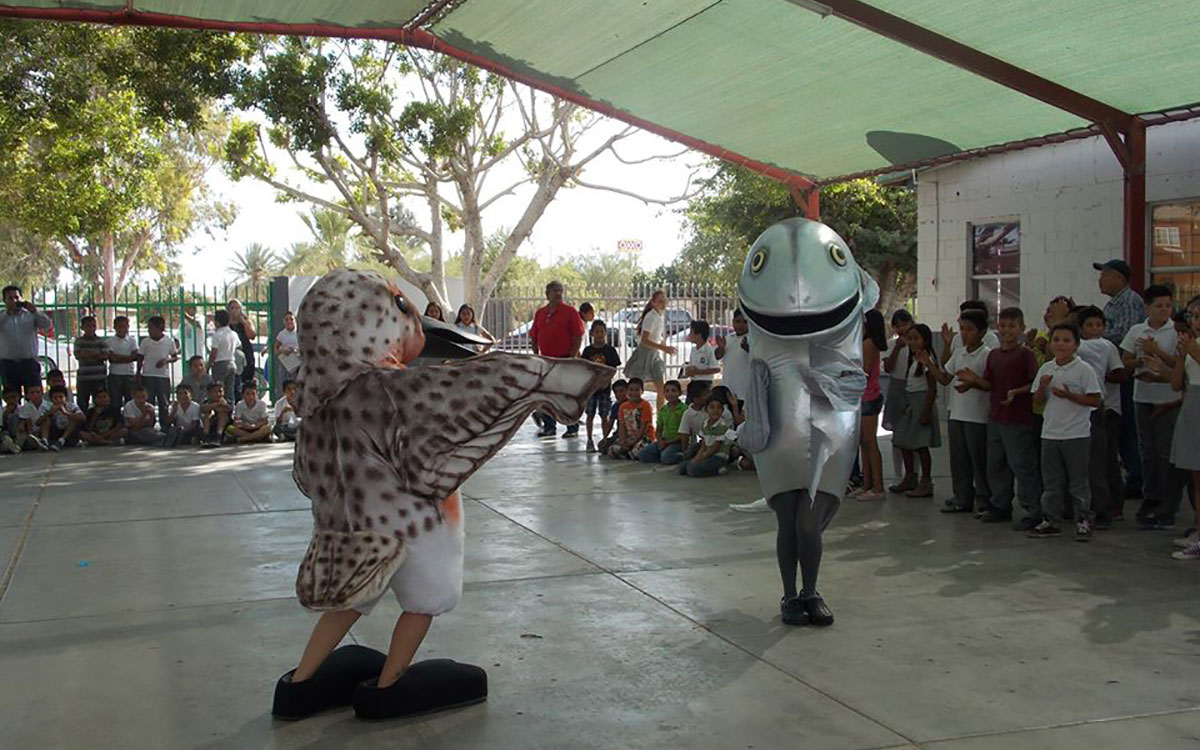
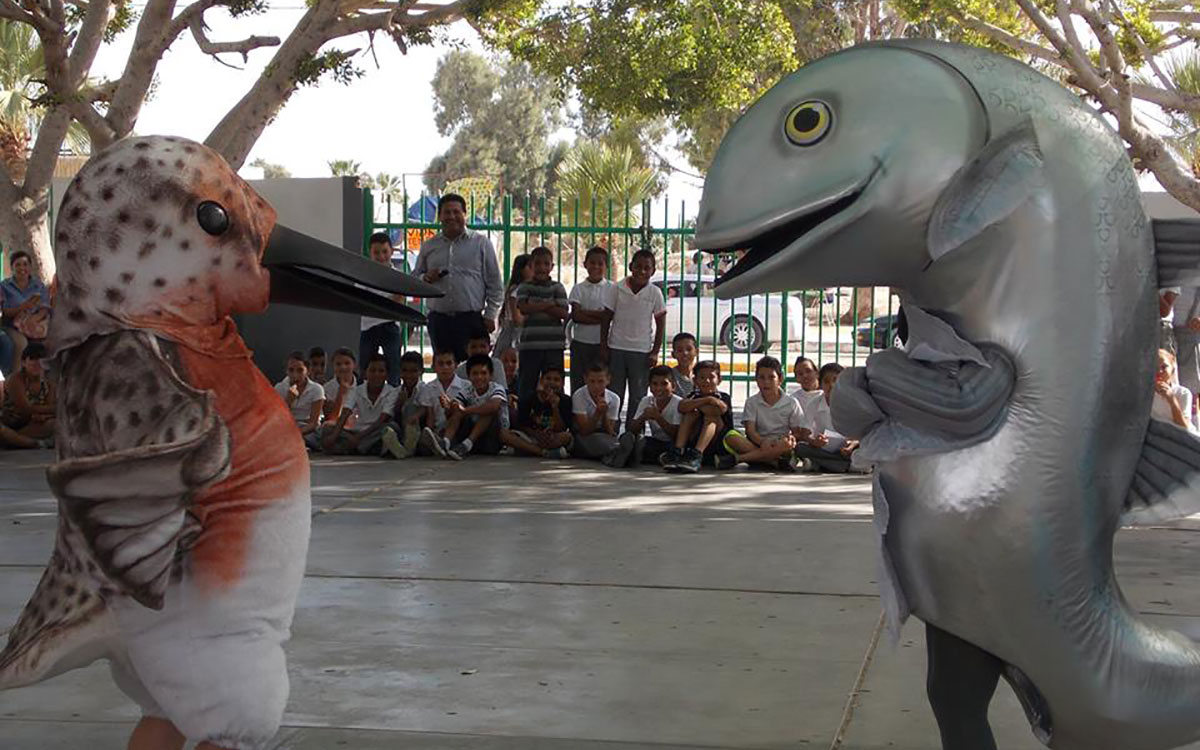
The pejerrey and Red Knot mascots “Pizo el rojizo” and “Alan el peje” presenting to a group of students at a local school. Photo: María Jesús Martinez Contreras.
PNO has created a teacher training manual that will be used to train teachers and expand the number of classrooms conducting shorebird lessons.
This spring to celebrate the 25th anniversary and help people understand that they share the beach with roselaari Red Knot, pejerrey, and other shorebirds, PNO, UABCS and CONANP will host at Golfo de Santa Clara a special day for shorebirds on the beach, with birdwatching, interactive plays, and the #todossomosavesplayeras wings. Pizo el rojizo and Alan el peje will surely be there, kicking off the festivities and inspiring dreams about conservation.





